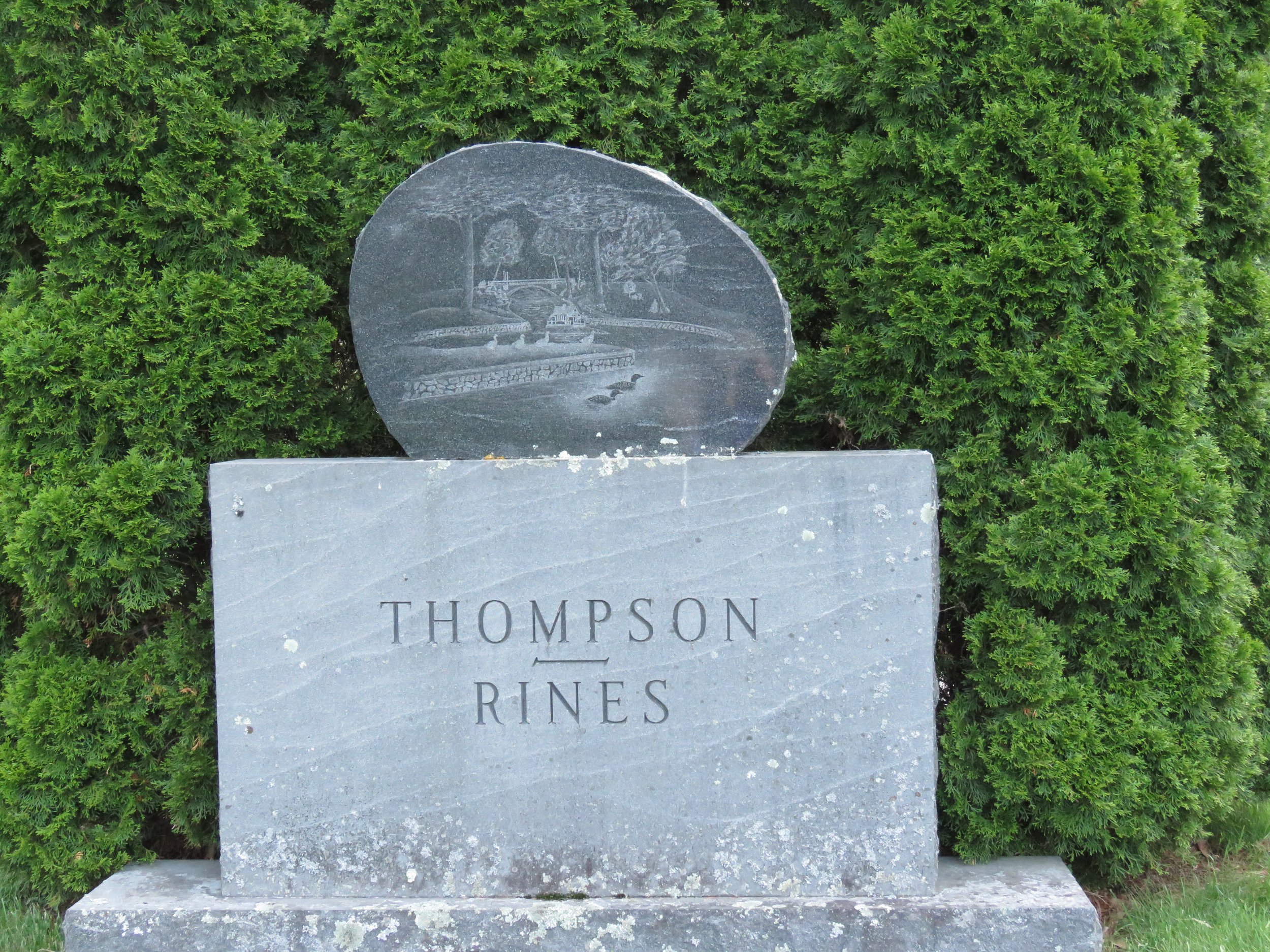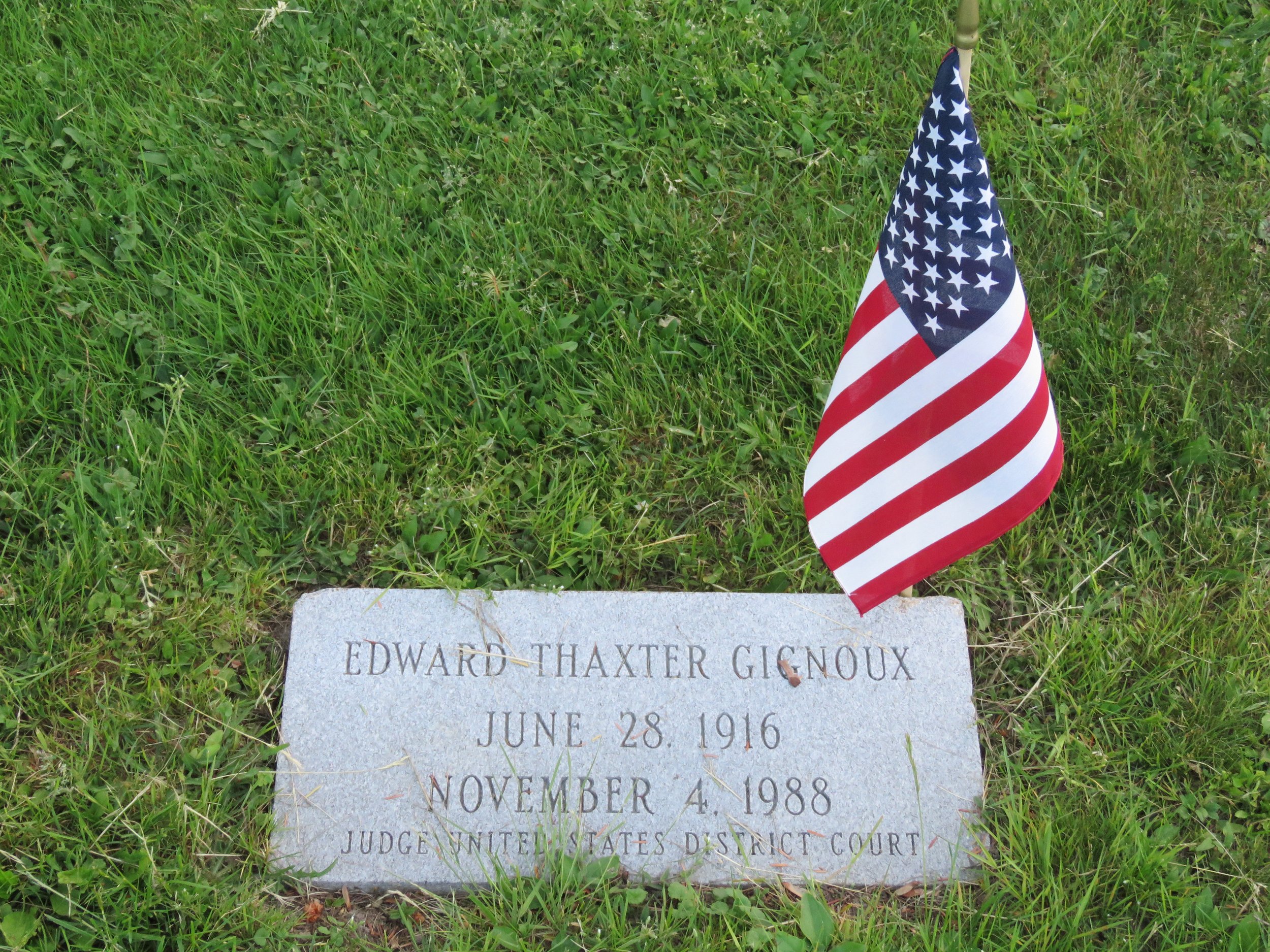Notable people in Evergreen Cemetery
James Phinney Baxter (1831-1921) Historian, Philanthropist, Mayor, Businessman
The Portland Packing Company which he began in 1863 became the largest food packing firm in the world. As Mayor of Portland, he expanded the park systems. He financed the construction of a public library that served Portland residents until 1979. He founded the Portland Society of Art and served for thirty years as president of the Maine Historical Society.
Helen Augusta Blanchard (1840-1922) Inventor
One of history’s most prominent female inventors, Blanchard was inducted into the National Inventors Hall of Fame in 2006. She is best known for her 1873 invention of the zig-zig stitch sewing machine. Throughout her life she earned 22 patents in the field. In 1881 she created the Blanchard Over-Seam Company of Philadelphia which became a successful venture.
Mildred Burrage (1890-1983) Artist, Historic Preservationist
Remaining a vital artist until old age, Burrage’s artwork ranged from portraits to impressionism to realism to abstract collage. Her work is exhibited in major collections in the eastern U.S., as well as The Portland Museum of Art, and Colby College. An ardent preservationist, she served as a director of the National Trust for Historic Preservation, and was involved in saving the Tate House and other historic Maine landmarks.
Hugh Chisholm (1847-1912) Entrepreneur, Founder of International Paper Company.
After leaving school at 13 to help support his family, he developed his business skills to become one of the foremost industrialists in Maine. He became involved in controlling the supply chain for his printing businesses and acquired pulp and paper, light and power companies, banks and railroads.
Nathan Clifford (1804-1881) Statesman
This loyal Democrat was a two term member of the House of Representatives, the United States Attorney General and the Minister to Mexico. In 1858 President Buchanan appointed him to the “New England” seat on the United States Supreme Court.
Lydia Neal Dennett (1798-1881) Abolitionist and Suffragist supporting votes for women.
Lydia and her husband Oliver’s home on Spring Street was an Underground Railroad station. It was the Dennetts who provided shelter and helped the enslaved couple Ellen and William Craft escape on a vessel leaving Portland harbor in 1848. Her suffrage work was directed both locally and nationally. Prior to the 1873 founding of the Maine Woman Suffrage Association, Lydia was active in the American Woman Suffrage Association.
Neal Dow (1804-1897) Legislator, Prohibitionist.
In 1851 Maine passed the first prohibitionist law in the United States. “An Act for the Suppression of Drinking Houses and Tippling Shops” became a national model and its author, Neal Dow, the principle advocate. He ran for Presidency on the Prohibition Ticket in 1880.
William Pitt Fessenden (1806-1869) Statesman
This political giant represented Maine in Congress from 1854 to 1869 and served as Lincoln’s Secretary of the Treasury during the Civil War. In Profiles in Courage, John Kennedy praises his integrity during the 1868 Andrew Johnson Impeachment trial.
Edward Thaxter Gignoux (1916-1988) United States Federal Judge for 32 years.
In 1957 Gignoux was nominated to a seat on the United States District Court for the District of Maine. He served as chief judge from 1978, assuming senior status in 1983 and serving in that capacity until his death. He twice presided over very sensitive cases, the 1972 Chicago Seven case and the 1970s land dispute case involving the State of Maine and the Penobscot and Passamaquoddy tribes. The U.S. Courthouse in Portland was named in his honor.
Griffin Reed (1837-1898) Black crew member of the SS Portland, and member of the Abyssinian Church
Reed was a Black crew member of the SS Portland, a passenger steamship that sank in a historic gale in 1898 with the loss of all 195 people on board. He was a cabin attendant and, at 61, one of the oldest and most experienced members of the crew. Reed’s body was never recovered. On the back of his memorial marker is the Hebrew word “Mizpah” which signifies an unbreakable bond between two people who are physically separated, especially by death. The loss of the SS Portland devastated Portland’s small Black community. Many Black Portlanders, both men and women, worked on passenger steamships as stewards and cooks. The Abyssinian Church on Newbury Street lost 19 members of its congregation, a fatal blow that ultimately led to the Church’s closing in 1917.
Thomas Brackett Reed (1839-1902) Statesman
Known as the “czar” of the House of Representatives, Reed was Speaker three times in his twenty-two years of service in Washington. He was mentioned in the Republican nomination for President in 1892 and 1896.
Francis Ormond Jonathan Smith (1806-1876) Lawyer, Legislator, Electric Telegraph Promotor
This colorful and controversial figure served three terms in the U.S. House of Representatives from 1833-1839. He assisted Samuel Morse in introducing the electric telegraph, and was a financial backer of the first lines set up in the U.S. Most of Smith’s independent telegraph projects were failures, and he spent most of his association with Morse bedeviling him with lawsuits.
Alexander Stephenson (1790-unknown) Louisa Jones Stephenson (1792-1882) Anti-Slavery Activists
Alexander and Louisa were members of Portland’s small and close-knit Black community in the years before the Civil War. Louisa was one of the original members of the Abyssinian Congregational Church — the first Black church in Portland. Alexander, a cab driver, was involved in Portland’s Underground Railroad. Their daughter Harriet and her husband Charles Eastman, who were notable anti-slavery activists, are also buried at Evergreen. The site of the Stephenson/Eastman house on Munjoy Hill is a stop on Portland’s Freedom Trail. https://www.mainehistory.org/documents/41/Portland_Freedom_Trail.pdf
Doris Stevens (Mitchell) (1888-1963) Suffragist Organizer, Lifelong Advocate for Woman’s Legal Rights
Stevens was arrested several times for her involvement in the year-long vigil of the Silent Sentinels during World War I. In 1920 she published an insider account of the imprisonment of the women, in the book Jailed For Freedom. She was portrayed in the 2004 film, Iron Jawed Angels, about the early suffrage movement.
John Calvin Stevens (1855-1940) Architect, Artist (Brushian)
Though he is known now mainly for his Shingle Style homes, mostly vacation homes, in harmony with their location, and with an open floor plan, Stevens designed many institutional buildings all over Maine, such as Biddeford City Hall and Theater, Saco Museum, Forest Ave. Post Office, 1910 Ptld Museum of Art, and nine buildings at Hebron Academy. He was also a member of a gentleman’s painting group who called themselves the Brushians.
Margaret Jane Mussey Sweat (1823-1908) Writer, Patron of the Arts
Her writings include voluminous diaries, poems, essays, novels, criticisms, and sketches of travel which were published in many important periodicals. They are now in the Maine Women Writers collection at UNE. She willed her home, the McLellan Mansion on High St. and $100,000 to the Portland Society of Art for the establishment of an art museum which was the foundation for the Portland Museum of Art.
William Widgery Thomas (1803-1896) Banking, Ambassador
A descendent of George Cleaves, the first settler and proprietor in the Portland area, William W. Thomas was commissioner of U.S. Immigration and an ambassador to Sweden. He facilitated the founding of New Sweden, Maine.
Mary Rines Thompson (1918-1992) President and Chairman of the Board of the Rines family-owned Maine Broadcasting System.
She was known for her volunteer leadership on both the local and state levels, and was first to receive the “Mary Rines Thompson Award,” one of the most prestigious public service awards in Maine.







